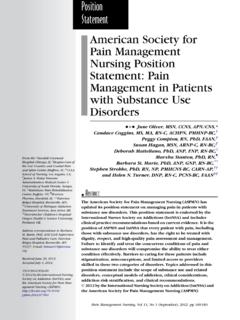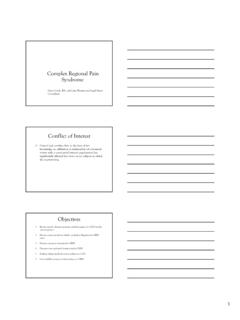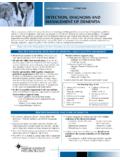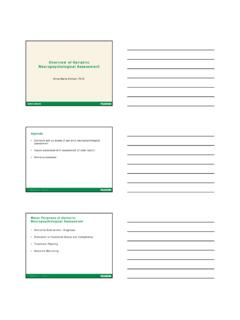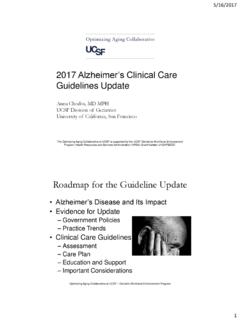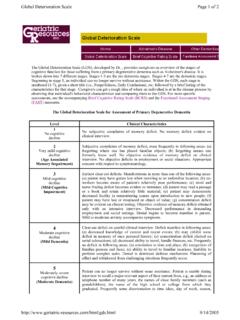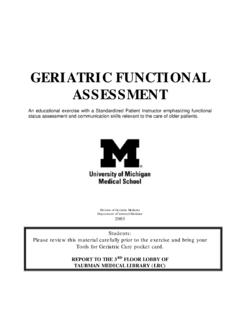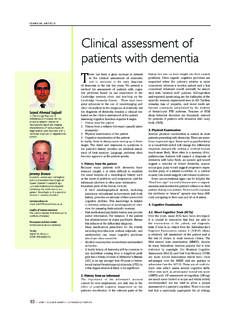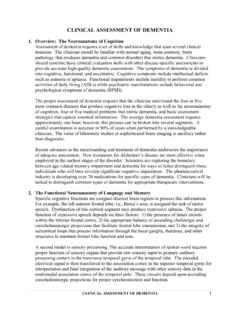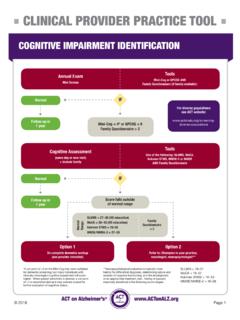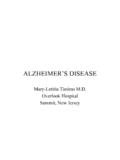Transcription of Pain Assessment in the Patient Unable to Self-Report ...
1 Position Statement Pain Assessment in the Patient Unable to Self-Report : Position Statement with clinical Practice recommendations Keela Herr, PhD, RN, AGSF, FAAN,*. --- Patrick J. Coyne, MSN, RN, APRN, FAAN, . Margo McCaffery, MS, RN, FAAN, . Renee Manworren, PhD, RN, CB, APRN, PCNS-BC, . and Sandra Merkel, MS, RN-BC{. From the *University of Iowa College of Nursing, Iowa City, Iowa; Virginia POSITION STATEMENT. Commonwealth University, Richmond, Virginia; Independent Pain is a subjective experience, and no objective tests exist to measure it Consultant in the Nursing Care of (American Pain Society, 2009).}
2 Whenever possible, the existence and intensity patients with Pain, Los Angeles, of pain are measured by the Patient 's Self-Report , abiding by the clinical definition California; Connecticut Children's Medical Center and University of of pain which states, Pain is whatever the experiencing person says it is, existing Connecticut School of Medicine, whenever he/she says it does'' (McCaffery, 1968). Unfortunately, some patients Hartford, Connecticut; {C. S. Mott cannot provide a Self-Report of pain verbally, in writing, or by other means, Children's Hospital, University of such as finger span (Merkel, 2002) or blinking their eyes to answer yes or no Michigan Health System, Ann Arbor, questions (Pasero & McCaffery, 2011).}
3 Michigan. This position statement addresses five populations of patients who may be Address correspondence to Dr. Keela Unable to Self-Report : older adults with advanced dementia, infants and preverbal A. Herr, John A. Hartford Center of toddlers, critically ill/unconscious patients , persons with intellectual disabilities, Geriatric Nursing Excellence, College and patients at the end of life. Each of these populations may be Unable to self- of Nursing, University of Iowa, 306. report pain owing to cognitive, developmental, or physiologic issues, including CNB, 50 Newton Road, Iowa, IA.
4 52242. E-mail: medically induced conditions, creating a major barrier for adequate pain assess- ment and achieving optimal pain control. Inability to provide a reliable report Received August 20, 2011; about pain leaves the Patient vulnerable to under recognition and under- or over- Accepted August 22, 2011. treatment. Nurses are integral to ensuring Assessment and treatment of these vul- nerable populations. The purpose of this document is to provide guidance for clinicians car- ing for populations in which pain Assessment is difficult.
5 Recommen- ETHICAL TENETS. dations provided are based on the best evidence available at the time of The ethical principles of beneficence (the duty to benefit another) and nonma- preparation. leficence (the duty to do no harm) oblige health care professionals to provide pain management and comfort to all patients , including those vulnerable indi- 1524-9042/$ 2011 by the American Society for viduals who are Unable to speak for themselves. Providing quality and compara- Pain Management Nursing ble care to individuals who cannot report their pain is directed by the principle of justice (the equal or comparative treatment of individuals).
6 Respect for Pain Management Nursing, Vol 12, No 4 (December), 2011: pp 230-250. Position Statement: Pain Assessment Without Self-Report 231. human dignity, the first principle in the Code of care, rehabilitation activities, positioning/turning, Ethics for Nurses'' (American Nurses Association, blood draws, heel sticks), should trigger an interven- 2001), directs nurses to provide and advocate for hu- tion, even in the absence of behavioral indicators. Iat- mane and appropriate care. Based on the principle rogenic pain associated with procedures should be of justice, this care is given with compassion and unre- treated before initiation of the procedure.
7 A change stricted by consideration of personal attributes, eco- in behavior requires careful evaluation of pain or other nomic status, or the nature of the health problem. In sources of distress, including physiologic compromise alignment with these ethical tenets, the International ( , respiratory distress, cardiac failure, hypoten- Association for the Study of Pain (IASP) initiated the sion). Generally, one may assume that pain is present, Declaration of Montreal at the International Pain Sum- and if there is reason to suspect pain, an analgesic trial mit, a statement acknowledging access to pain man- can be diagnostic as well as therapeutic (American Pain agement as a fundamental human right endorsed by Society, 2008).
8 Other problems that may be causing 64 IASP Chapters and many other organizations and in- discomfort should be ruled out ( , infection, consti- dividuals (International Association for the Study of pation) or treated. Pain, 2011). Observe Patient Behaviors. In the absence of self- The American Society for Pain Management Nurs- report, observation of behavior is a valid approach to ing positions that all persons with pain deserve prompt pain Assessment . Common behaviors that may indicate recognition and treatment.
9 Pain should be routinely as- pain, as well as evidence-based valid and reliable be- sessed, reassessed, and documented to facilitate treat- havioral pain tools for the selected populations, have ment and communication among health care been identified for each subpopulation. Although clinicians (Gordon, Dahl, Miaskowski, McCarberg, weak to moderate correlations have been found be- Todd, Paice, et al., 2005). In patients who are Unable tween behavioral pain scores and the Self-Report of to Self-Report pain, other strategies must be used to in- pain intensity, these two means of pain Assessment fer pain and evaluate interventions.
10 No single objective measure different components of pain (sensory and be- Assessment strategy, such as interpretation of behav- havioral) and should be considered to provide comple- iors, pathology or estimates of pain by others, is suffi- mentary information about the pain experience. cient by itself. Therefore, a behavioral pain score should not be con- sidered to be equivalent to a Self-Report of pain inten- sity ( , a behavioral pain score of 4/10 does not GENERAL RECOMMENTATIONS FOR. equal a Self-Report of pain intensity of 4/10).


